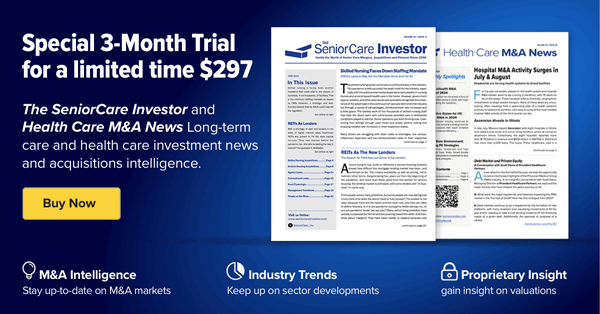Despite the volatile market conditions for healthcare M&A, hospice targets have remained a remarkably consistent draw for investors, according to data captured in DSO. In the second quarter of 2020, 70% of HH&H transactions were for hospice specific targets, or targets that provided only hospice services, instead of a mix of hospice and home health services. In Q1:20, only 22% of transactions focused on hospice targets, so it seems hospice demand is rising.
So why are hospice targets continuing to attract investors, even as interest in home health targets slides? The appeal of the hospice market could be attributed to its stable reimbursement and payment rates compared with home health. Before the COVID-19 pandemic, investors and buyers in the home health market were holding out for the effects of the Patient-Driven Groupings Model, a reimbursement overhaul introduced by the Centers for Medicare and Medicaid Services (CMS) on January 1, 2020. The impact on small agency owners was expected to be tough, with many industry insiders predicting a wave of bankruptcies, closures, and sales in the first year of PDGM.
In the hospice market, however, there has been no such major disruption. In October 2019, CMS introduced the Primary Care First (PCF) program, a voluntary, risk-based initiative intended to reduce Medicare spending by preventing avoidable hospital admissions and improving quality of care, especially for patients with complex chronic conditions. It’s currently delayed until 2021 and will be available in only 26 regions, but it’s a program that many providers might find advantageous.
Companies can enroll in either or both of the payment options provided through the PCF program. The first is the “General” option, which introduces higher payments for practices caring for complex, chronically ill patients. The second referred to as the Seriously Ill Population Model (SIP) option, is specifically geared toward hospice providers, especially those that offer palliative care services.
PCF is a purely optional program, but as the healthcare industry in general moves to a value-based model, the transition might be natural and smooth.
Investors are certainly ahead of the curve. In 2019, 35% of hospice companies targeted in a deal offered palliative services, including Hospice Compassus, which was sold by Formation Capital and Audax Private Equity for $1 billion. TowerBrook Capital Partners, an investment management firm, and Ascension, the largest not-for-profit Catholic health system in the United States, were the buyers.
For deals in 2020 so far, 31% of hospice targets offered palliative care, showing demand has remained consistent. In mid-July, Alleo Health System, a nonprofit family-focused hospice provider, added Upper Cumberland Hospice and Palliative Care Services to its network. Upper Cumberland serves residents of Putnam County in Tennessee. This acquisition extends the Alleo Health network service coverage to the Cumberland Plateau area of Tennessee, now covering 23 counties in Georgia, North Carolina, and Tennessee.
Additionally, future tailwinds could be propping the sector up. With an aging U.S. population, and increased awareness of hospice and palliative care due to the COVID-19 pandemic, the hospice M&A market might prove to be more resilient and stable than we expected.


